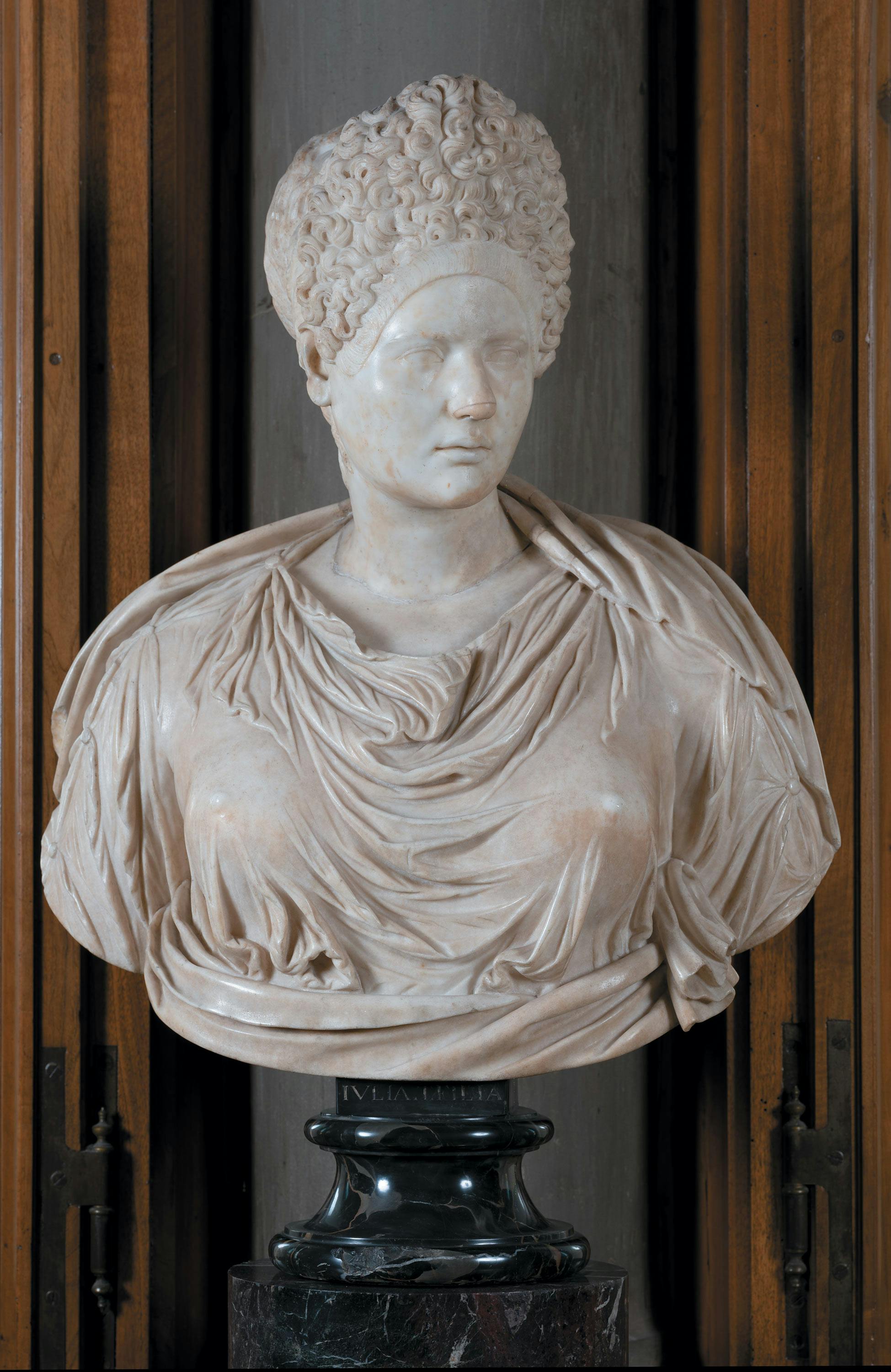Portrait of a matron from the age of Adrian
Roman art
The portrait, with ancient face, neck and a small portion of the robe on the back, can be dated to the age of Hadrian, as is clear from the finish of the surfaces, the shape of the eyes - reminiscent of that of Vibia Sabina, wife of the Emperor Hadrian (117-138 AD), even if the eyeballs, not rendered three-dimensionally, place it before the 130s - and the hairstyle. The hairstyle looks extremely natural and the locks that rise to form the high toupee are well-defined, while the subject's natural hair is gathered in a soft bun at the back, according to the main portrait type used to portray Hadrian's bride, which can be dated to 128 AD. The forehead is then bordered by a fringe of small sickle-shaped locks, which frame the pensive young matron’s face and recall the fashion followed by the women of Trajan's family (98-117 AD). Instead, the splendid bust,reproducing the tunic and part of the cloak, wrapped around the waist, is modern and can be dated to around 1570.
At least one other ancient replica of this remarkably high quality portrait is known of: mounted on a draped statue, it is kept in Palazzo Barberini in Rome. This suggests that the matron in question was an influential figure in Hadrian's Rome, perhaps linked to the domus Augusta, and therefore honored with several official portraits. Here, her task is to serve as an example of the rich and refined patrons and evergeti (benefactors) of the imperial age who, inspired by the female model provided by the court, were able to carve out spaces for public action and obtain official recognition.
The very first mention of the statue placed it in Rome, where both replicas were probably produced, in the collection of Giacomo Boncompagni (1548-1612), son of Pope Gregory XIII. From there it passed to Prince Ludovisi, until it was purchased, as part of a lot of fifteen sculptures, by Cardinal Leopold de' Medici in 1669.
